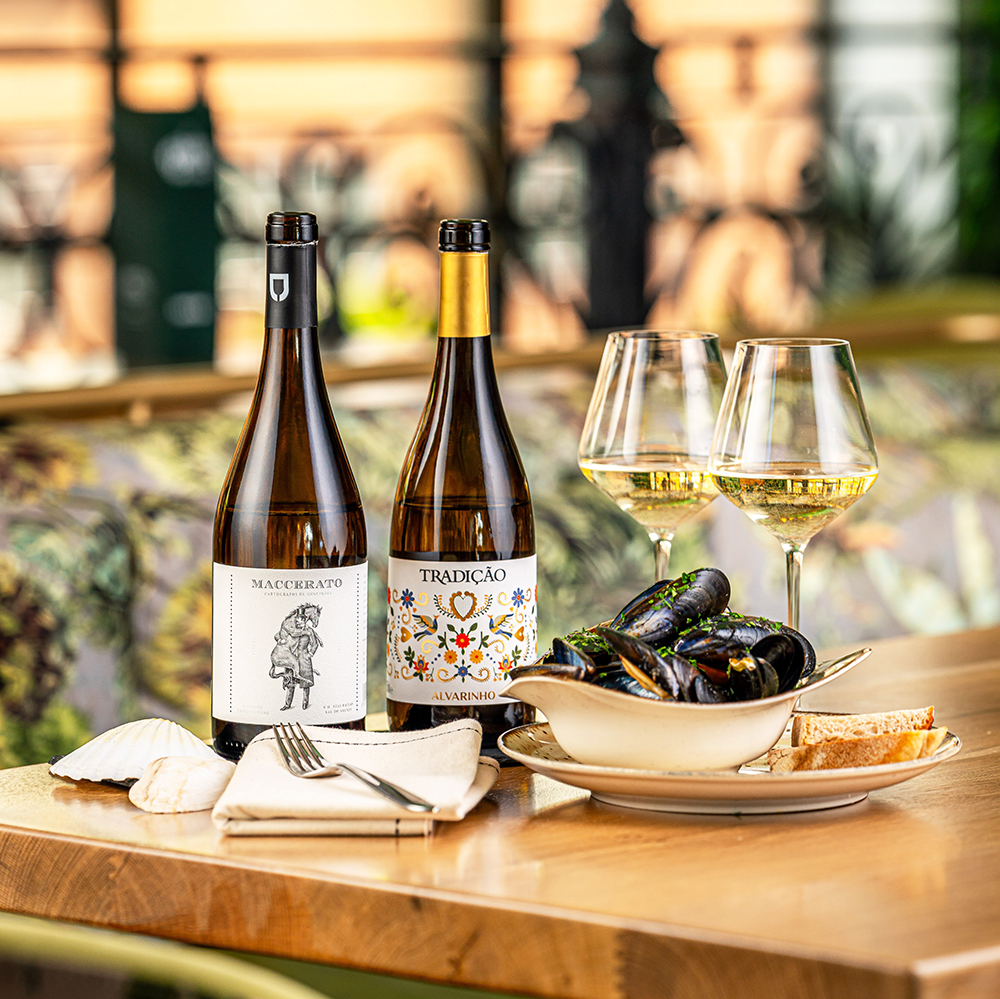Celebrating World Albariño Day
Posted by Tamsin on 30th Jul 2024
Each year, wine enthusiasts around the globe unite to celebrate World Albariño Day on 1st August, a day dedicated to one of the most distinctive and delightful white wines. This annual celebration shines a spotlight on Albariño, a grape variety that has captured the hearts of many with its vibrant flavours and rich history. Join us as we delve into the origins, tasting notes, and growing regions of Albariño, and discover why this wine deserves a special place in your glass.
The History of Albariño
Albariño, often referred to as the “wine of the sea,” has a storied past that dates back to the Middle Ages. It is believed that the grape was brought to the Iberian Peninsula by monks from the Cluny Abbey in France, who planted the first Albariño vines in the Galicia region of northwest Spain. The grape thrived in this coastal area, and its popularity quickly spread.
The name Albariño translates to "the white from the Rhine," which suggests that the grape might have Germanic roots, possibly related to Riesling. However, over centuries of cultivation in Galicia, Albariño has developed its own unique identity, perfectly adapted to the local terroir.
Tasting Notes
A Sensory Delight Albariño is celebrated for its bright, aromatic profile and refreshing acidity, making it an ideal wine for warm weather and seafood pairings. Here’s what you can expect when you pour a glass:
Appearance: Albariño wines typically have a pale straw to golden colour, often with a slight greenish hue, reflecting their freshness. Aroma: The nose is a burst of floral and fruity notes. Expect aromas of citrus fruits like lemon and lime, stone fruits such as peach and apricot, and a hint of tropical fruits like pineapple. There is often a subtle floral aroma, reminiscent of jasmine or honeysuckle.
Palate: On the palate, Albariño is crisp and lively, with high acidity that gives it a refreshing zing. The citrus and stone fruit flavours carry through, often accompanied by a distinct minerality and salinity, which many attribute to the coastal vineyards where the grapes are grown.
Finish: The finish is clean and zesty, often leaving a lingering impression of citrus and a slight hint of salinity, making you yearn for another sip.


Traditional Growing Regions
The most famous region for Albariño is undoubtedly Rías Baixas in Galicia, Spain. This Denomination of Origin (DO) is where Albariño truly shines, benefiting from the Atlantic climate, with its moderate temperatures and high rainfall. The region's granite and sandy soils contribute to the wine’s signature minerality and crispness. Albariños from Rías Baixas are known for their complexity and elegance, often showcasing a perfect balance of fruit, acidity, and minerality.
Just south of Galicia, across the border in Portugal, Albariño is known as Alvarinho and is a key component in Vinho Verde wines. These wines are typically light, slightly effervescent, and highly aromatic, offering a delightful drinking experience. The Monção and Melgaço subregions of Vinho Verde are particularly renowned for producing high-quality Alvarinho wines.
Newer Growing Regions
Albariño has found a welcoming home in the United States, particularly in California and Oregon. In California, regions like the Central Coast and Napa Valley are experimenting with Albariño, producing wines that maintain the grape’s characteristic acidity and fruitiness while adding a touch of New World ripeness. Oregon’s cooler climate, especially in the Willamette Valley, offers conditions similar to Galicia, yielding Albariños with bright acidity and nuanced minerality.
Australia is another emerging region for Albariño, with vineyards in areas like the Adelaide Hills and Tasmania. The cool climates of these regions are ideal for preserving the grape’s acidity and aromatic qualities. Australian Albariños are gaining recognition for their vibrant flavours and crisp, refreshing profiles.
Known for its excellence in white wines, particularly Sauvignon Blanc, New Zealand is also exploring Albariño. Regions such as Marlborough and Hawke’s Bay are producing Albariños that exhibit intense aromatics and lively acidity, reflective of the country's cool maritime climate.
Pairing Albariño: A Match Made in Heaven
Albariño’s high acidity and bright flavors make it a versatile wine for food pairings. Here are some perfect pairings to enhance your Albariño experience:
Seafood: Albariño’s natural salinity and citrus notes complement a wide range of seafood dishes, from grilled fish and shrimp to ceviche and oysters.
Cheese: Fresh, tangy cheeses like goat cheese or young Manchego pair beautifully with Albariño, as do creamy cheeses like Brie.
Asian Cuisine: The wine’s acidity and fruitiness balance the bold flavours and spices of Asian dishes, such as sushi, Thai curries, and Vietnamese spring rolls.
Salads and Light Dishes: Albariño’s freshness enhances light, vegetable-based dishes and salads, especially those with citrus dressings or vinaigrettes.









